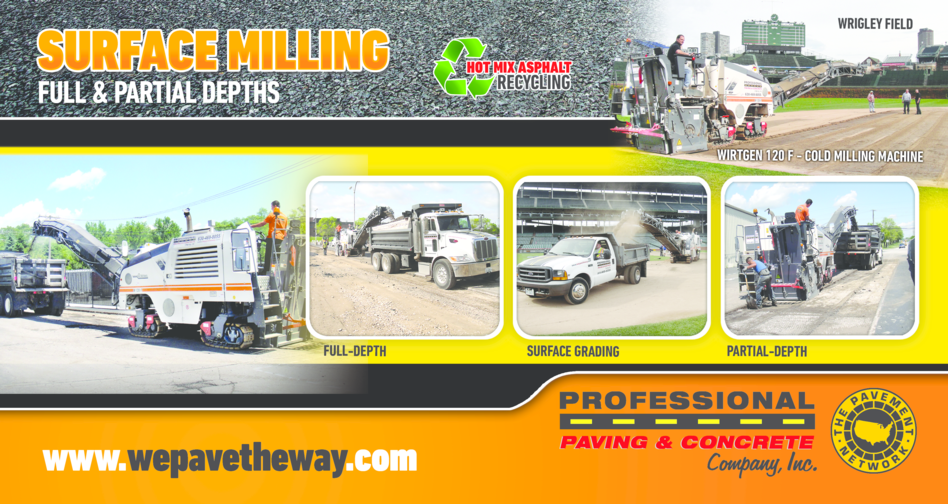SURFACE MILLING & RESURFACING
Surface Milling or Asphalt Milling is a process of removing (grinding down) an existing surface to a specified depth which is commonly completed as prep work in the paving process for the re-installation of new hot-mix asphalt material.
Commercial pavement surface areas accessed by light-duty vehicular traffic usually range in thickness between (3-4) inches & heavier-duty areas – such as truck docks and shipping areas – normally range between (4-6) inches of pavement surface depth. Depending on the scope of work being performed, the two primarily applications for surface milling as listed below:
FULL-DEPTH SURFACE MILLING
Full-Depth surface milling is when a specified section of in-place pavement surface area is completely removed down to the existing stone base. This will normally be part of the paving work scope when a surface area has exhausted its serviceability and no longer has the structural strength to support the weight limits from the deflection of vehicular traffic. This allows for the most efficient & effective way to remove the pavement being replaced with little to no disturbance of the stone base left in place.
PARTIAL-DEPTH SURFACE MILLING
Partial-Depth surface milling is when a specified section of in-place pavement surface area is removed to a quantified depth below the pavement surface area. This can be part of the paving work scope when a pavement surface area is to be resurfaced (overlayed) or patched. This allows for a new layer of asphalt pavement – commonly referred to as the pavement wearing layer – to be installed without negative affects on drainage grades or transitional joints – which are other surface areas art the same grade as aprons, walkways, dumpster pads, bordering curb & gutter, etc.



